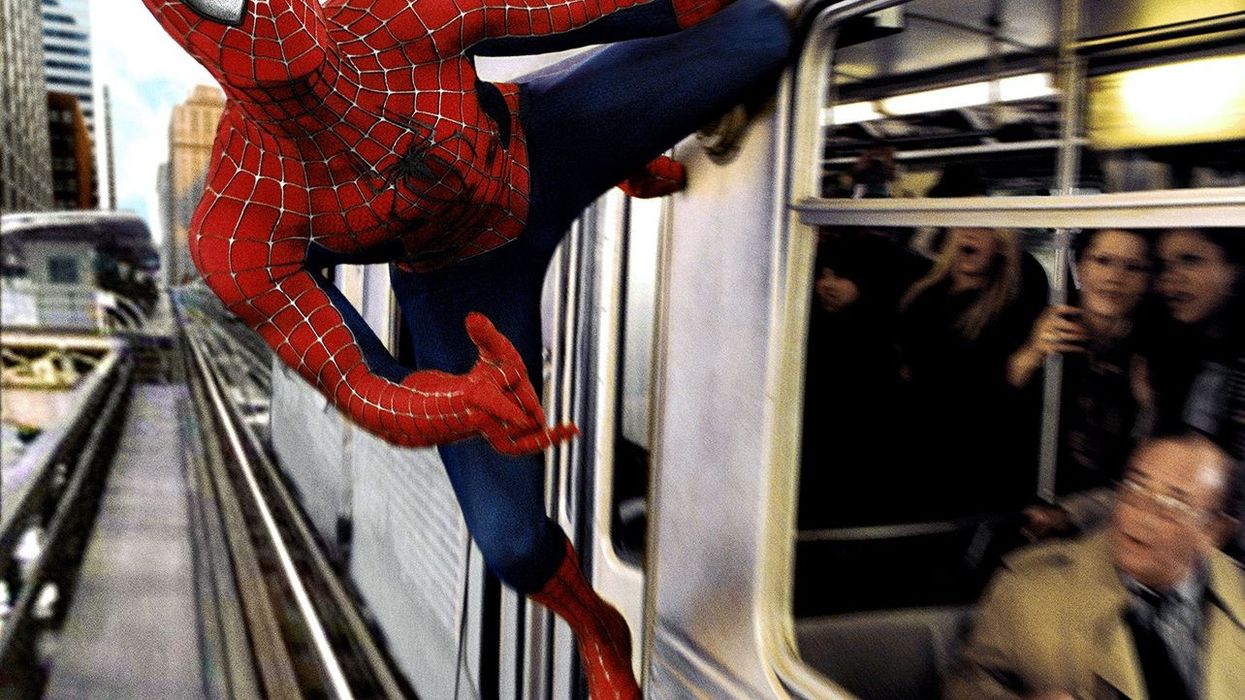8 Great Filmmaking Lessons from Sam Raimi's 'Spider-Man 2'
What's the best superhero movie ever, and why is it Sam Raimi's classic sequel?

When we talk about landmark movies in our lives, I frequently cite Sam Raimi's Spider-Man 2 as the film that made me believe in my imagination. I was a comic book nerd growing up, and I guess I still am. It's hard to believe, but there wasn't much that catered to us or took us seriously back in the day.
There was basically Mallrats and Lost, and that's it.
When the first Spider-Man came out, it felt like a revelation. It was riding on Fox's X-Men coattails and focused on a coming-of-age origin story for Peter Parker. That movie was good. But while it delivered cool moments, I knew Spider-Man's origins already.
By the time Spider-Man 2 came out, I was ready for another adventure, and boy, did Sam Raimi deliver.
We received a spectacular story that was humanist, pure, and elevated the genre and filmmaking. It made us take comic book movies seriously and delivered a fantastic ride built on the very principle of imagination.
Today, I wanted to look at eight lessons from the movie and how they can inspire your own writing.
8 Great Filmmaking Lessons from Sam Raimi's Spider-Man 2
1. Embrace Your Vision.
As I mentioned above, Raimi's first Spider-Man was a good movie. But what I think he learned from making it was the idea that he could be himself on the studio level.
The "weird" parts of the movie, like Bonesaw, the Bruce Campbell cameo, and the canted angles all really felt pulpy. When it came time for the sequel, Spider-Man 2 went full Raimi. We had the amazing Doc Ock surgery scene, the quick cuts, and the whip pans.
Don't hide who you are. Showcase it.
2. Peter Parker > Spider-Man
This is the first superhero movie I remember watching that emphasized the people outside of the costumes. Particularly Peter Parker. It was all about how hard it would be to have great power and greater responsibility. And it took the character to a relatable place where they wanted to quit.
Not only was that innovative, but it also helped foster empathy within us. You weren't jealous of Peter. You wanted to hug him.
So how are you making your main character relatable?
3. Every Character Needs Motivation
It's not just about leads when you're making a movie. You need a great supporting cast. One thing Raimi does across his films, but especially here, is motivating characters. In this one, he shows Mary Jane with clear prerogatives. She wants her career to go well, but she also wants Peter to do better at supporting her. We have Harry, suffering from some personal torment and wondering if he can trust his best friend.
Are your characters motivated?
4. Sympathetic Villains
As a writer, I am always trying to write my villains eviler and scarier... but there are times I forget you actually don't have to do that. You have to understand where the villain comes from.
In Spider-Man 2, Doc Ock was a tortured original. He lost his wife, he's sharing his mind with mechanical arms, and he's out for vengeance. And we genuinely feel bad for him! Sure, we don't think he should kill or leave destruction in his wake, but we understand every bad thing he does.
Do we get your villain's motivations? Are they randomly evil, or do we know what's driving them?

5. The Location Is a Character
New York City should be billed as one of the stars of this movie. The brief interludes where everyday New Yorkers talk about Spider-Man are some of the funniest in any movie. And when we see the people on the train lift Spidey in the air, we see a smattering of real-life faces we usually don't get in these movies.
Where is your story located? Can you make that location pop and feel like a character in and of itself?
6. Make Your Visuals Memorable
Part of what makes this movie so great is that you remember all the set pieces and visuals. From Doc Ock's arms, which have their own personalities, to that train sequence, to Peter being late for MJ's play, there are many striking visuals in this movie. I mean, what about the slow-motion car-flip scene where Peter saves MJ?
The point is, pick your visuals wisely. There are also a lot of comic cutaways that fit within the genre here.
7. Musical Cues Can Work!
We shit on the street dancing in Spider-Man 3, but you forget the music really works in the second film.
When we see Peter go from hero to average guy, the montage is really stunning and evocative of the movie's theme.
So when you're picking your needle drops, see how you can get them. Take chances. When they pay off, you look great. That's part of the fun.

8. No One Has to Win
Maybe the craziest thing to happen in this movie is that no one really wins in the end. Sure, New York doesn't get destroyed, but Doc Ock is the one who sacrifices himself to save the city. Peter helps redeem him and gets back with MJ, but he sees how much humanity can lose when they don't choose love.
That's not to say this is a downer. It's a kind of fun and beautiful look at being alive.
Think outside the box. What's the real lesson you want the audience to get at the end of the story?
What's next? Get our free screenwriting eBook!
So much of what we're talking about on No Film School when it comes to screenwriting is summarized in our new eBook. It also helps guide you through a 10-week writing plan that will get your script actually finished.











